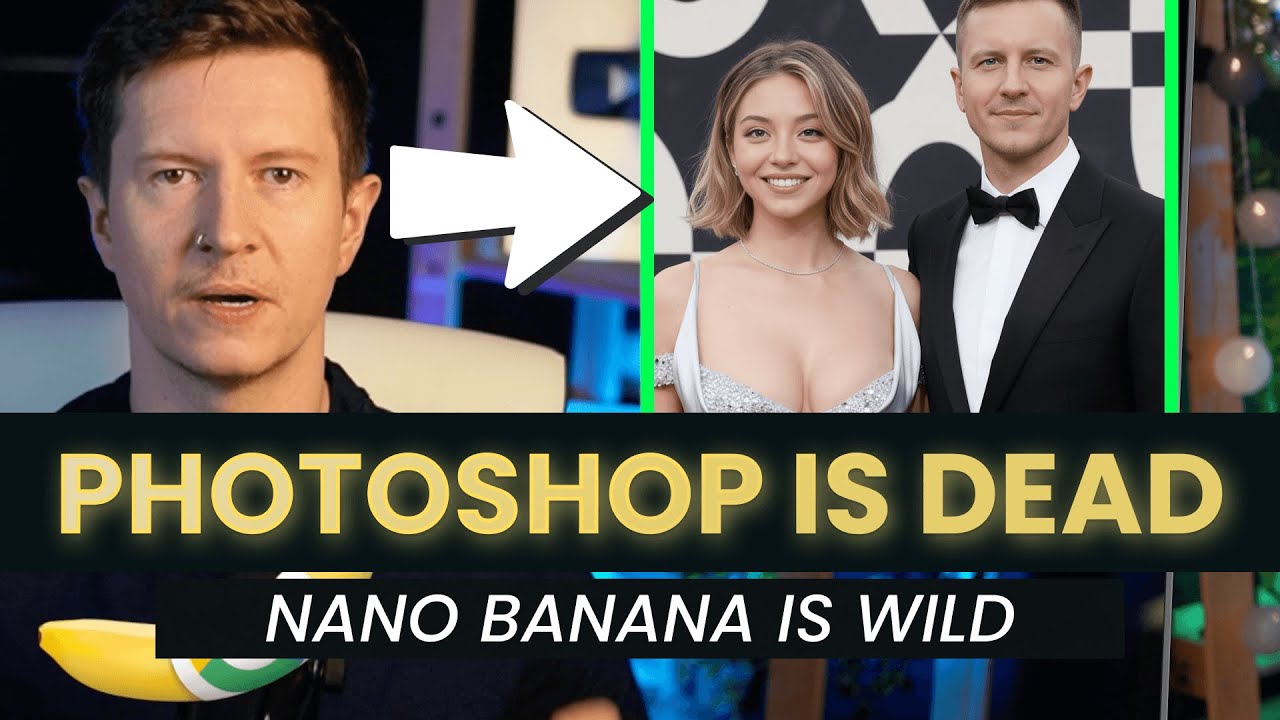The video showcases Google’s Nano Banana AI image model, demonstrating over 50 versatile use cases ranging from simple selfies with celebrities to complex business applications like photorealistic interior design and historical image perspectives, while highlighting its unique features such as synth ID watermarking and API integration. It also addresses the model’s limitations with practical solutions, encourages experimentation for creative and monetization opportunities, and compares Nano Banana’s strengths to other AI image tools.
The video introduces Google’s new AI image model, Nano Banana (also known as Flash 2.5), highlighting its revolutionary capabilities that surpass traditional tools like Photoshop. The presenter, AI Samson, demonstrates over 50 surprising and practical use cases, starting with simple tasks such as creating selfies with celebrities and progressing to complex business applications. Viewers are encouraged to try these use cases themselves using free prompts provided in the video description. The video also showcases various apps built on Nano Banana, such as Gem Booth for webcam photo transformations into different artistic styles and Pass Forward, which generates images of oneself across different historical decades.
One of the standout features of Nano Banana is its versatility and integration into custom applications via API, enabling highly specific and narrow use cases. For example, Home Canvas allows users to place products into scenes with photorealistic lighting and composition, and can be customized to show different architectural styles for interior design. The model also excels at combining multiple objects into a single image, creating collages or vision boards that serve as visual reminders of personal goals. Additionally, Nano Banana supports generating images from different angles, including side views and alternate perspectives of historical photos, maps, and blueprints, opening up new creative and practical possibilities in fields like architecture and game development.
The video emphasizes the importance of synth ID, an invisible watermark embedded in every Nano Banana-generated image to verify its AI origin, which is crucial for distinguishing real from AI-generated content in the future. When compared to other leading image models, Nano Banana excels in image editing, character consistency, and complex graphic design, though it is slightly less strong in stylization and aesthetic creativity. The presenter recommends using comparison platforms to understand the strengths and best use cases of different AI models, highlighting the skill of choosing the right tool for each creative task.
Despite its impressive capabilities, Nano Banana has some limitations, such as occasional refusal to generate certain images, challenges with exact aspect ratios, and imperfect facial likenesses. The video offers practical solutions to these issues, including rephrasing prompts, using design tools like Figma to adjust aspect ratios, and combining Nano Banana outputs with other AI tools like Midjourney for enhanced aesthetics. For improving facial accuracy and resolution, the presenter recommends using the face-swapping and upscaling features of the tool Aphagato, which can refine facial details and increase image resolution significantly.
In conclusion, Nano Banana represents a major leap forward in AI image generation, offering a wide range of creative and business applications. The video encourages viewers to experiment with the model and explore its potential for monetization, such as creating niche apps or AI influencer content. It also invites the audience to share their own use cases and ideas for future exploration. Overall, the video provides a comprehensive overview of Nano Banana’s capabilities, practical tips for overcoming its limitations, and inspiration for leveraging this powerful AI tool in innovative ways.
